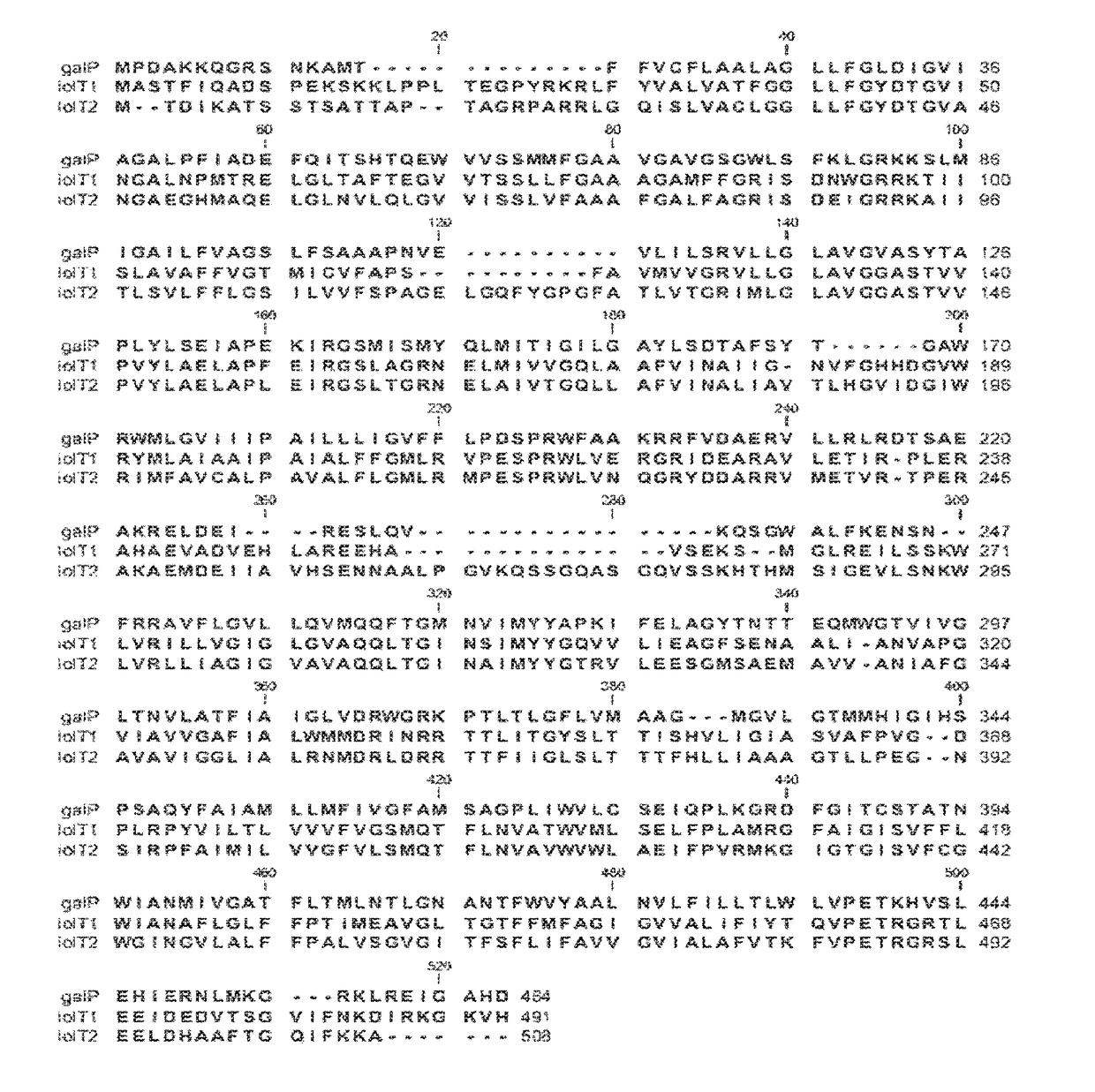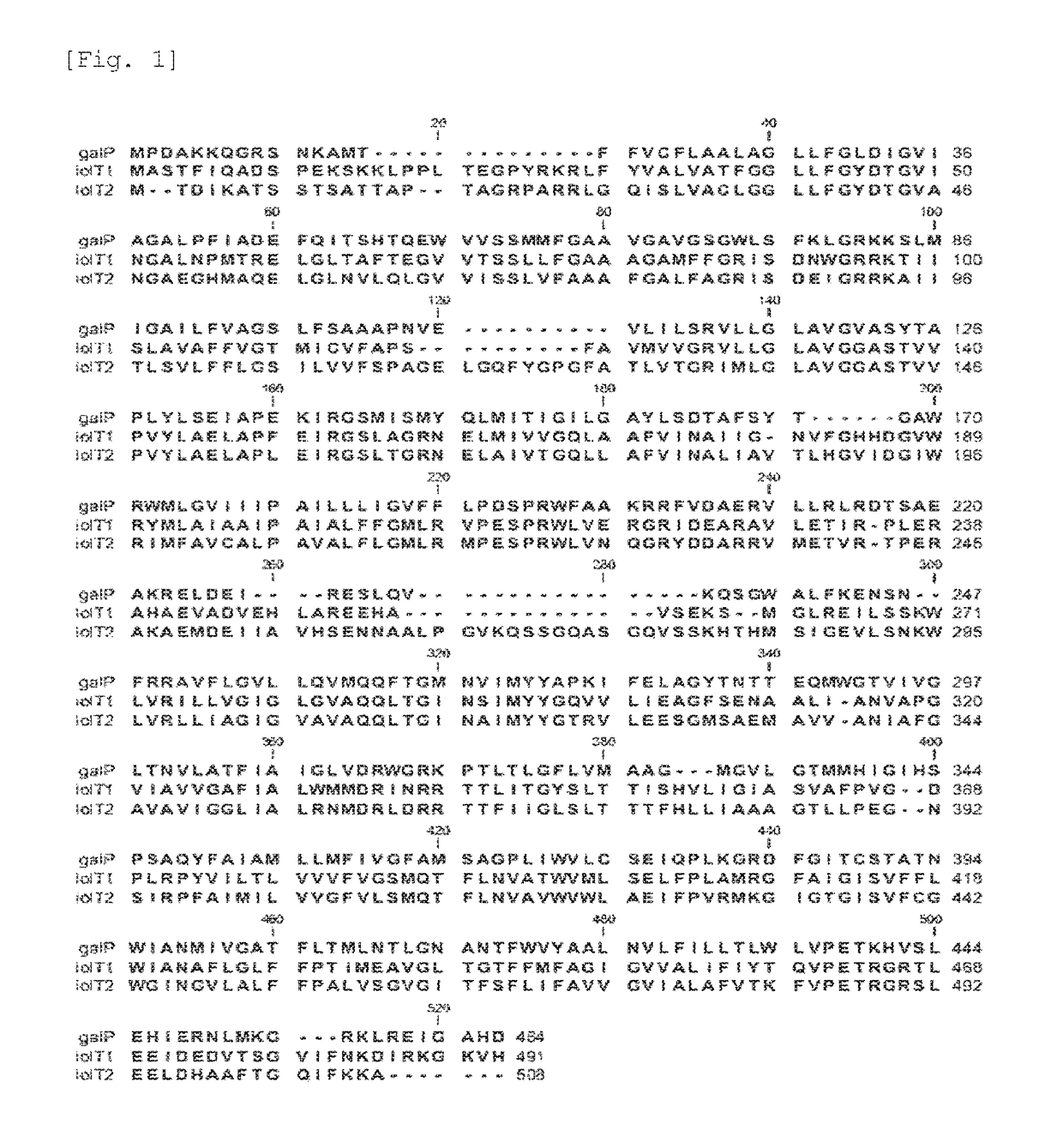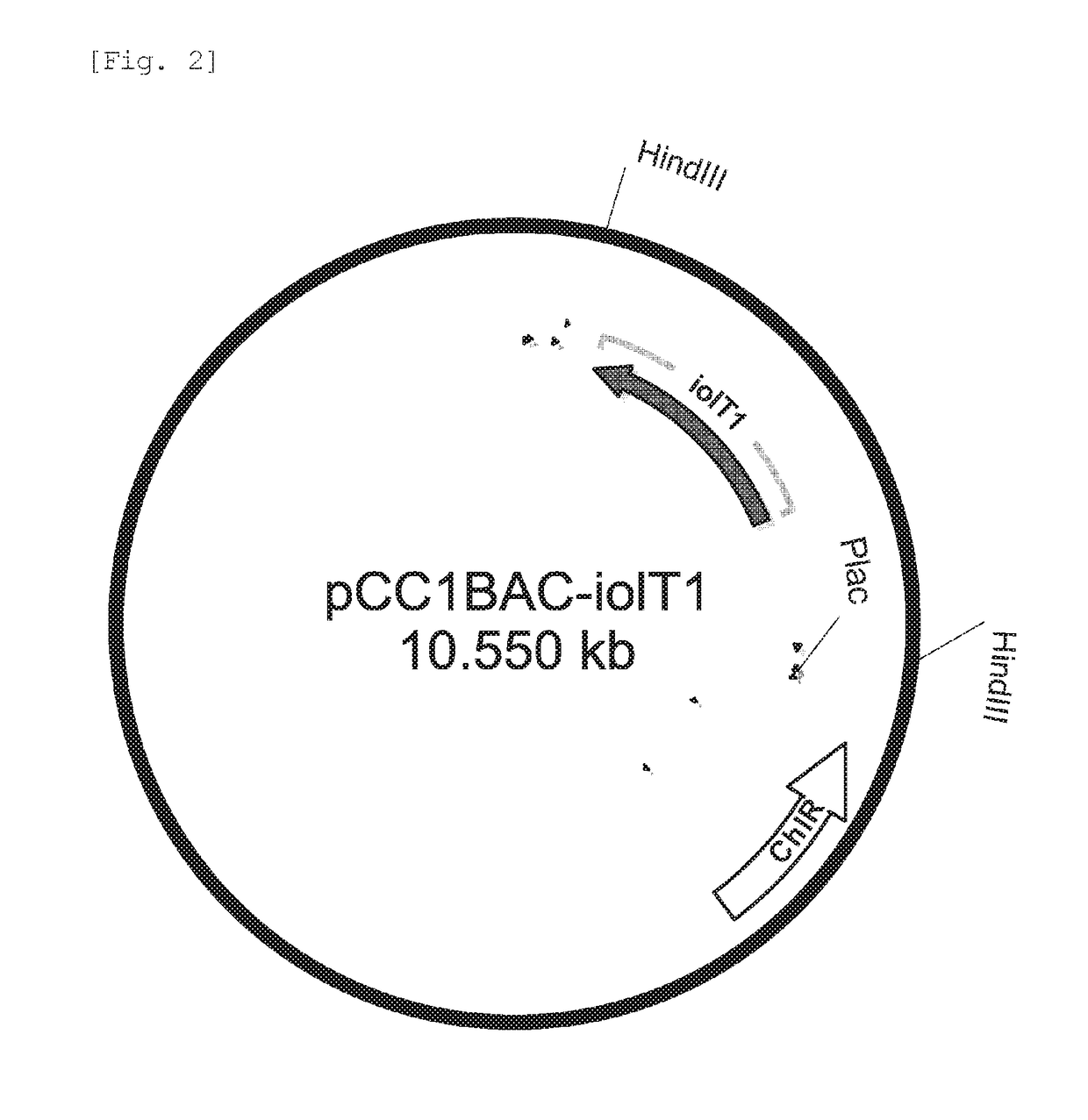Recombinant microorganisms of Escherichia with L-threonine productivity and method of producing L-threonine using the same
a technology of escherichia and recombinant microorganisms, which is applied in the direction of peptides, chemistry apparatus and processes, depsipeptides, etc., can solve the correlation between inositol permease and threonine production, and achieve the effects of high yield, increased growth rate of strains, and increased production of industrially significant l-threonin
- Summary
- Abstract
- Description
- Claims
- Application Information
AI Technical Summary
Benefits of technology
Problems solved by technology
Method used
Image
Examples
examples
Comparative Example: Construction of Recombinant Strains by Transformation with Recombinant Vector Comprising E. coli galP Gene and Comparison of L-Threonine Productivity
[0042]It was reported that galactose permease in E. coli functions as glucose permease, and when the expression of galactose permease is increased, for example, by increasing the copy number of galactose permease, the threonine productivity of the E. coli strain is increased (WO 2004 / 087937). To verify this report, a recombinant strain was constructed by increasing the copy number of the galP gene in the L-threonine-producing strain KCCM 10541, and the L-threonine productivity thereof was evaluated.
[0043](1) Construction of Recombinant Vector Comprising E. coli, galP Gene
[0044]To obtain a 1.4-kb fragment comprising the open reading frame of the E. coli galP gene, the genomic DNA of the wild-type E. coli strain W3110 was extracted using a Genomic-tip system (Qiagen).
[0045]A polymerase chain reaction (hereinafter abbr...
example 2
ion of Recombinant Strains by Transformation and Comparison of L-Threonine Productivity
[0077](1) Construction of Recombinant Strains Using Wild-Type E. coli
[0078]Each of the recombinant vectors (pCC1BAC-iolT1, pCC1BAC-iolT2 and pCC1BAC-iolT1-iolT2) constructed in Example 1 above was introduced into wild-type E. coli MG1655 comprising the threonine operon-overexpressing vector pRRThrABCR3 (Lee K H et al., Molecular Systems Biology (2007) 3:149) by electroporation, and then the E. coli cells were plated on solid media containing 100 μg / ml of ampicillin and 15 μg / ml of chloramphenicol to select single colonies.
[0079]The selected strains were named MG1655 / pBRThrABCR3 / pCC1BAC-iolT1, MG1655 / pBRThrABCR3 / pCC1BAC-iolT2 and MG1655 / pBRThrABCR3 / pCC1BACiolT1-iolT2, respectively.
[0080]The L-threonine productivities of these strains were analyzed in the same manner as described in Comparative Example 1-(3) above using the threonine titer medium having the composition shown in Table 1 above, and t...
PUM
| Property | Measurement | Unit |
|---|---|---|
| temperature | aaaaa | aaaaa |
| temperature | aaaaa | aaaaa |
| size | aaaaa | aaaaa |
Abstract
Description
Claims
Application Information
 Login to View More
Login to View More - R&D
- Intellectual Property
- Life Sciences
- Materials
- Tech Scout
- Unparalleled Data Quality
- Higher Quality Content
- 60% Fewer Hallucinations
Browse by: Latest US Patents, China's latest patents, Technical Efficacy Thesaurus, Application Domain, Technology Topic, Popular Technical Reports.
© 2025 PatSnap. All rights reserved.Legal|Privacy policy|Modern Slavery Act Transparency Statement|Sitemap|About US| Contact US: help@patsnap.com



